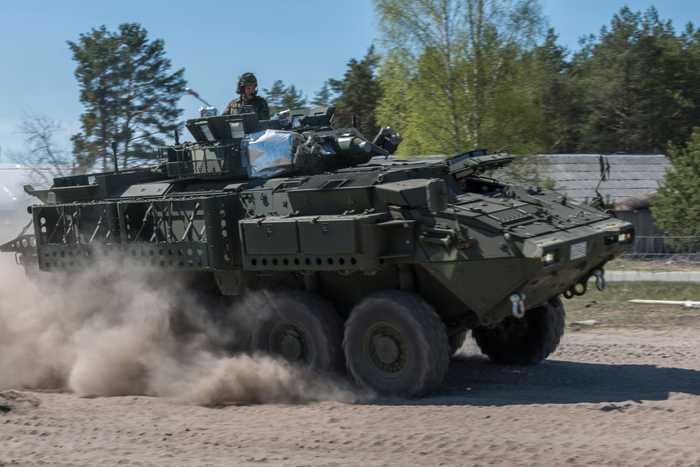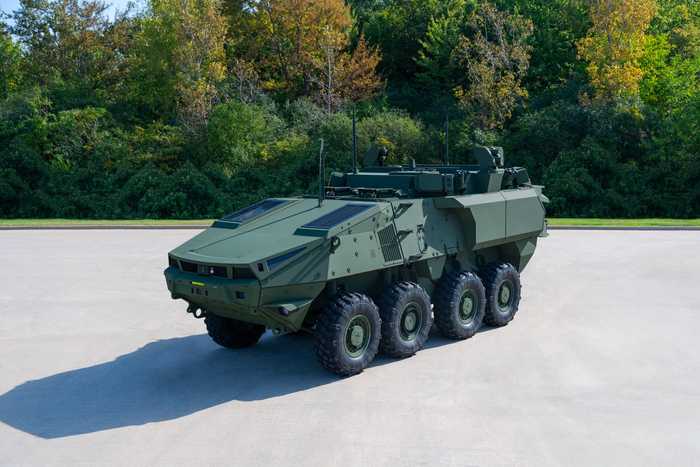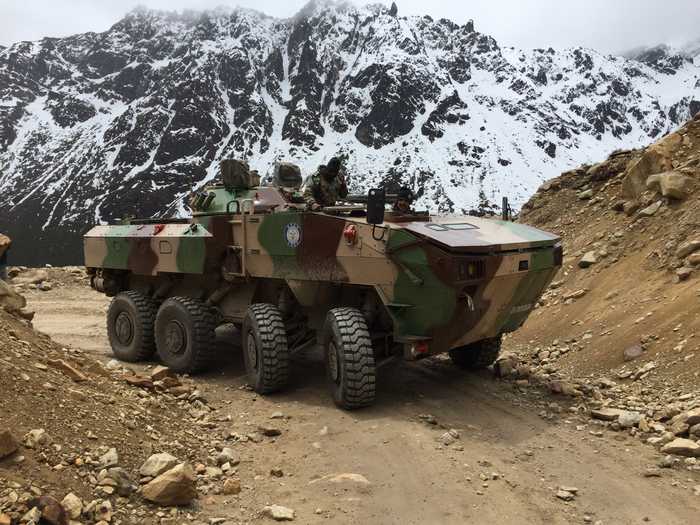Published 16:34 IST, November 5th 2024
Diplomatic Rift Over Khalistani Issue Stalls India’s Stryker Armoured Vehicle Purchase
The escalating diplomatic rift between India and Canada now threatens the Indian Army's potential acquisition of Canadian-made Stryker armoured vehicles.
- Defence
- 4 min read
New Delhi, India- As diplomatic relations between India and Canada continue to deteriorate, doubts have arisen regarding the Indian Army’s planned procurement of the Canadian-made Stryker armoured vehicles. The Ministry of External Affairs (MEA) recently criticized Canadian Prime Minister Justin Trudeau for lacking concrete evidence in his allegations linking Indian government agents to the assassination of Khalistani separatist Hardeep Singh Nijjar in 2022. Given the heightened diplomatic strain, questions loom over the future of the Stryker deal, which could significantly impact India’s defence acquisitions strategy.
On October 17, India’s MEA publicly refuted Canada’s allegations against Indian diplomats, a dispute that has cast a shadow over potential bilateral defence deals. Trudeau, during a Commission of Inquiry, admitted that his accusations against India were based solely on intelligence, lacking definitive “hard evidentiary proof.”
MEA spokesperson Randhir Jaiswal reiterated India’s stance, stating, “Canada has presented us no evidence whatsoever in support of the serious allegations that it has chosen to level against India and Indian diplomats.”
This diplomatic fallout may now influence critical defence negotiations, such as the Stryker deal.
What is the Stryker?
The Stryker is an eight-wheeled, armoured combat vehicle developed by General Dynamics Land Systems-Canada, primarily for the U.S. Army but built in Ontario, Canada. Named in honour of Medal of Honor recipients Stuart S. Stryker and Robert F. Stryker, the vehicle has seen extensive combat use in Iraq and Afghanistan since its first deployment in 2003.

Built on the Canadian Light Armored Vehicle (LAV) III platform, the Stryker offers the following key features:
- Weight: 18 tons, with a two-man crew capacity and space for nine soldiers.
- Armaments: Equipped with an M2 .50-inch heavy machine gun or a 40-mm automatic grenade launcher mounted on a remotely operated turret.
- Performance: Powered by a Caterpillar C7 350 horsepower engine, it has a top speed of 99 km/h and a range of 482 km.
- Transportability: Compatible with C-130 Hercules aircraft for rapid deployment and Indian Chinook helicopters for mobility in regional operations.
The Stryker is highly versatile, with multiple variants tailored for specific combat roles, including Infantry Carrier Vehicle (ICV), Mobile Gun System (MGS), Mortar Carrier (MC), and Anti-tank Guided Missile Vehicle (ATGM), among others. Designed to offer protection in urban and open terrains, the Stryker includes bolt-on ceramic armour and can withstand improvised explosive devices (IEDs), providing enhanced soldier safety in conflict zones.

Amidst strained diplomatic relations, the Stryker deal, which could have enhanced India’s armoured combat vehicle capabilities, is reportedly on pause. While the Indian Army expressed interest in the vehicle for its agility, protection, and modular adaptability, the current climate may delay or indefinitely suspend the acquisition. Defence experts have suggested that India might benefit from reconsidering its dependency on foreign armoured vehicles and instead focusing on bolstering indigenous defence production.
India’s Indigenous Alternative: The Wheeled Armoured Platform (WhAP)
Some defence analysts have highlighted the homegrown Wheeled Armoured Platform (WhAP) as a viable alternative to the Stryker. Jointly developed by the Defence Research and Development Organisation (DRDO) and Tata Advanced Systems Limited, WhAP is India’s most advanced armoured infantry combat vehicle programme to date. Capable of being outfitted with anti-tank guided missiles, surveillance equipment, and protective armour, the WhAP is designed to meet the operational requirements of the Indian Army. Its versatility in both mobility and configuration allows it to perform roles similar to those of the Stryker, with the added benefit of indigenous manufacturing and support.
If the Stryker deal remains on hold, it could reshape India’s defence procurement policies, leading to a stronger emphasis on domestic manufacturing. This shift could strengthen India’s defence industrial base, reducing reliance on foreign partners for critical military assets. However, it would also necessitate greater investment in research, development, and scaling production capacities within India to meet the Army’s operational demands.

The diplomatic rift could drive India to further diversify its international defence partnerships, potentially seeking alternative suppliers for armoured vehicles, including the U.S. or European defence firms. Alternatively, India may expedite its development of indigenous systems like WhAP to achieve self-reliance in armoured vehicle production.
The Stryker deal’s uncertain future reflects the complexities of international defence trade, where geopolitical tensions can impact military procurement plans. While Stryker offers advanced capabilities that would strengthen India’s mechanized forces, the India-Canada diplomatic breakdown could prompt the Indian government to prioritize indigenous defence solutions. With the WhAP and similar programmes, India has the foundation to develop domestically produced, advanced armoured vehicles tailored to its operational needs. Should the deal remain on hold, it might accelerate India’s trajectory towards defence self-sufficiency, reshaping the future of its armoured vehicle fleet.
Updated 16:34 IST, November 5th 2024